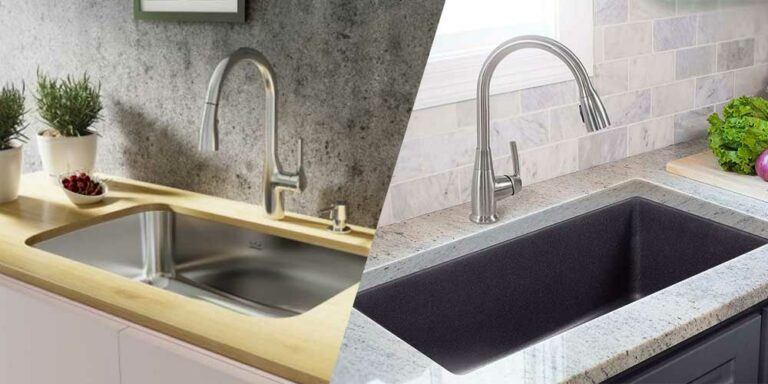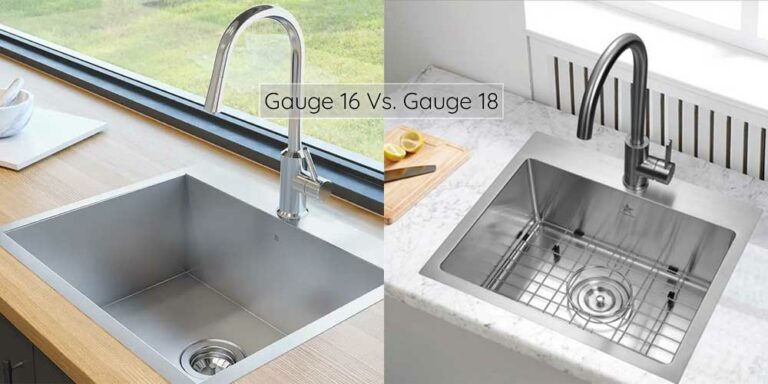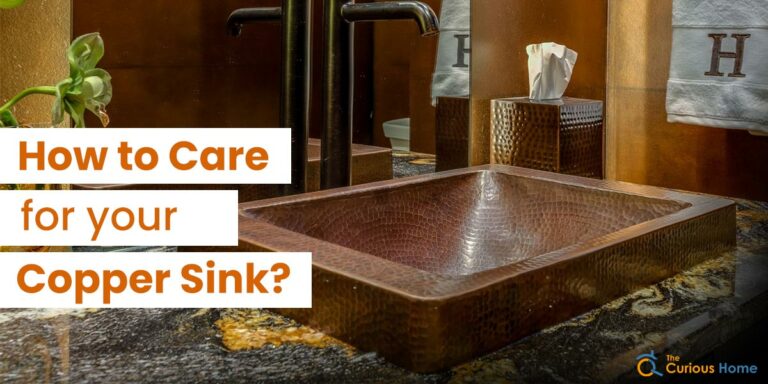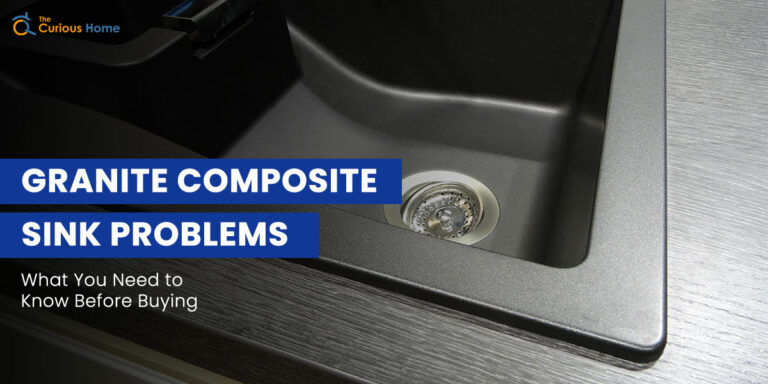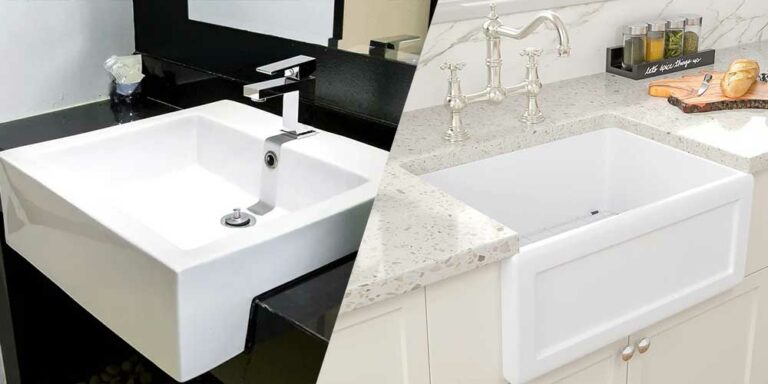Stainless Steel Vs Porcelain Sink | Which Is Better For Your?
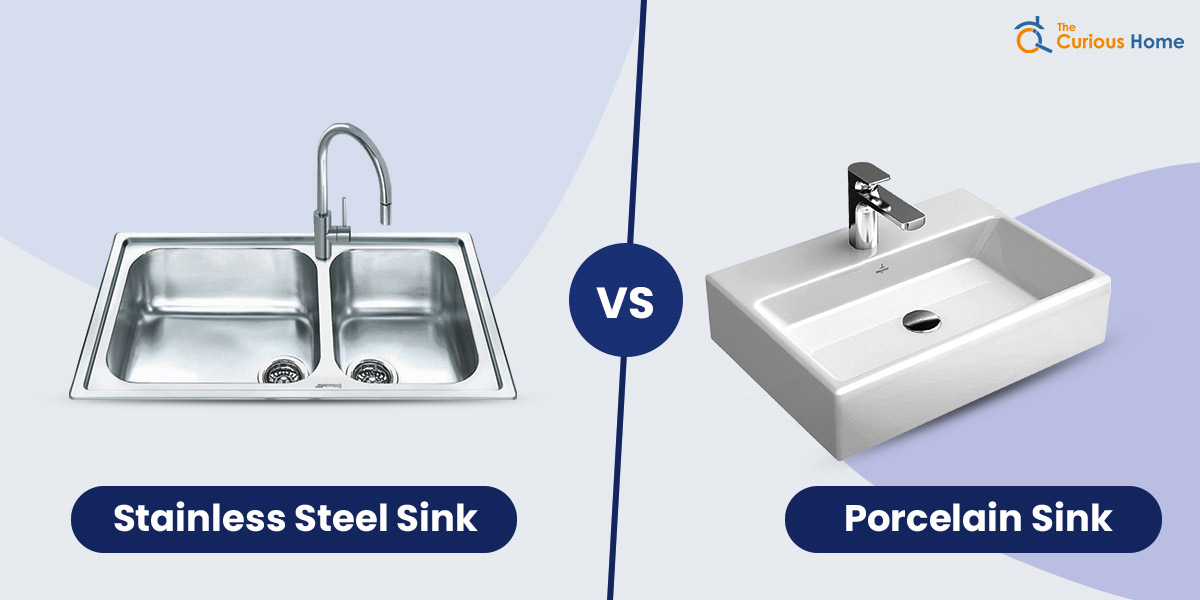
The kitchen is the core corner of any home. For a homemaker, each element of the kitchen must be weaved with utmost perfection and attention to detail. Every aspect of your kitchen reflects your personality and is a mirror of your choices. Making decisions from kitchen tiles, décor, and interior to sinks is part of modeling an ideal kitchen space for your daily activities.
The most important facet of a kitchen is cleanliness, and the sink is the cleanliness genie which helps you to eliminate all unwanted waste from your kitchen. A sink must possess functional comfort so you can easily work around it. There are many top sink options in the market ranging in size, material, built, and durability.
Choosing which sink would be a perfect fit for your kitchen from these options can sometimes be confusing since there has always been a rivalry between sink materials like stainless steel or cast iron, ceramic or porcelain, granite composite or stainless steel, etc. And continuing the battle of materials, we have stainless steel vs porcelain sink.
What Are Stainless Steel Sinks?

In today’s world, stainless Steel is among one of the most admired materials for kitchen sinks as they are long-lasting, easily manageable, and undoubtedly budget-friendly; therefore, it does full justice to its reason for being so popular.
Stainless Steel sinks enable their users to have countless styles and designs at various price points. Therefore, it allows the person using it to have a hassle-free journey in attaining their perfect sink.
These stainless sinks are built of different gauges, which symbolize the thickness of the sink and directly correspond to the product’s overall durability.
Thinner the gauge, the greater the chance of getting dent, and the thicker the gauge lesser the chance. Thinner gauge generally comprises of 22 to 24 gauge, whereas thicker gauge comprises somewhere around 14 to 18. This makes the thinner one cheaper in nature when compared with, the thicker one.
Pros of Stainless Steel
- Complementary to the silver-grey color of most utensils.
- Stainless steel sinks are incredibly durable, which sets their users free from the circle of buying and changing. Once you invest and you are good to go for a long time.
- Availability in various designs. One of the most highlighting features of stainless steel sinks is that they come in various designs, which allow the customer’s choices to be more customized.
- The stainless steel sinks do not catch stains nor chip off. Hence, it certainly needs less cleaning or maintenance
- Budget-friendly. Stainless steel sinks are very economical, which keeps their customers’ wallets happy.
Cons of Stainless Steels
- Deficiency of multiple colors. Though stainless steel sinks are durable, strong, and catch fewer stains, all this goodness comes along with one major turn-off: the ‘lack of multiple color options,’ as these sinks are mostly available in silver.
- Stainless Steel, compared to porcelain steel, has more chances of getting scratched while scrubbing or cleaning.
- Stainless steel sinks turn out to be a bit noisy when used for washing the dishes.
What Is Porcelain Sink?
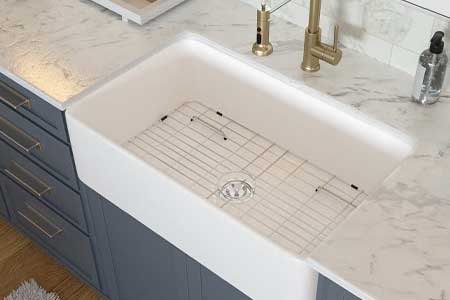
Porcelain sinks are crafted with a classy elegance. It gives an artistic look to your kitchen counter. It is made from a highly impact-resistant ceramic material which is made by baking a distinct clay in a kiln at high temperatures. Porcelain is translucent and white in color, which gives a very classic look.
Porcelain sinks are known for their undisputed strength and resistance. A good quality porcelain sink can last for a long time, withstanding heavy utensil loads and cleaning. Homeowners can even customize it in different colors for a more appealing look.
Pros of Porcelain
- Smooth and glossy finish
- Very durable and long-lasting material
- Available in classic white cream style or other color-glazed options
- Temperature resistant as the ceramic material goes through extreme baking
- Easy cleaning process. A normal swipe is enough as the surface is non-porous.
Cons of Porcelain
- Porcelain sinks are very heavy weight. Hence they can be hard to install.
- Chipping is common in glazed porcelain sinks.
- White porcelain sinks can highlight yellow stains due to food residue.
Stainless Steel Vs Porcelain Sink | A Detailed Comparison
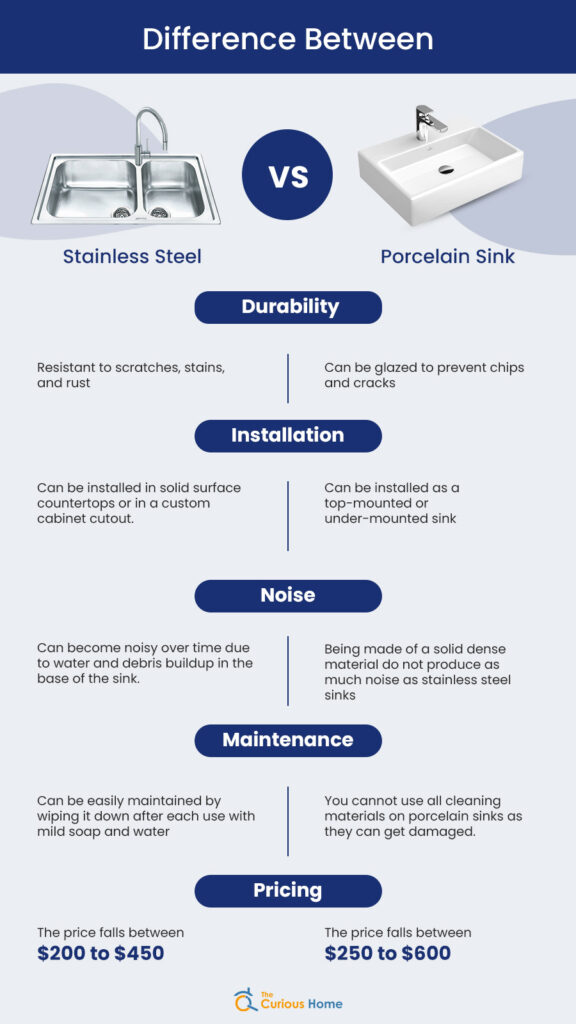
There are some major differences between porcelain sinks and stainless steel sinks that decide whether they are a perfect fit for your kitchen. You must look out and examine these comparable factors while buying a sink:
1. Durability
Porcelain material is treated in high-temperature clay ovens, which makes them extremely robust. It can hold heavy utensils and blows. But, most porcelain sinks have enamel coating or contain iron underneath the porcelain layer. Heavy and sharp objects can lead to easy chipping in porcelain sinks.
The expected lifespan of high-quality porcelain sinks is between 25- 30 years. On the other hand, stainless Steel is durable as it does not chip or stain easily. A rough scrub will also not land a scratch on the sink bottom. It would be best if you went for thick stainless Steel, as thickness and durability are directly proportional. Stainless steel sinks last for good 15- 20 years if they are made from premium quality materials.
2. Installation
With a lightweight material, stainless steel sinks are easier to install in the kitchen. The mounting clips involved in installing stainless sinks are fewer, which makes the process much faster. You can choose under mount style, or drop-in kitchen style for stainless Steel sinks due to their reasonable weight.
Porcelain sinks are bulky and require more mounting effort. Additional reinforcements are needed to keep the sink in position. All this increases the total installation time for porcelain sinks. Drop-in kitchen or self-rimming sink placement is more suited for porcelain sinks.
3. Noise
The noise intensity depends upon the sink material’s thickness and density. Porcelain sinks are more solid, non-porous, and thick; hence they do not produce a very loud noise when utensils are dropped on their surface, or a fast stream of water flows through the tap.
Stainless steel sinks are relatively thinner. When you drop stainless steel utensils or any object in the sink, it creates vibration and loud clattering noise. Noise is also produced when the tap water hits the sink walls and sink bottom due to less gauge. Superior quality stainless steel sinks come with noise-cancellation pads.
4. Maintenance
Stainless Steel is easier to maintain. A simple dish of liquid and water solution will leave the stainless steel sink squeaky clean. You can even scrub it without worrying about chipping or scratches. Tough spots can be put out by using a mixture of natural baking soda and any cleansing liquid.
Whereas, maintaining and cleaning a porcelain sink is an easy task that can be done with simple household items. Use a mixture of baking soda and water and scrub with a soft-bristled brush to clean the sink. Avoid using abrasive cleaners or scrubbers as they can scratch the surface. To remove tough stains, use a mixture of water and hydrogen peroxide or a porcelain cleaner specifically designed for sinks.
5. Pricing
Stainless steel sinks and porcelain sinks feature similar price ranges. The price of standard stainless steel sinks falls between $200 to $450, depending upon the thickness and gauge of the Steel used. If you go for higher quality and more specifications, stainless steel sinks also come in the range of $2000.
Porcelains fetch a higher amount ranging between $250 – $600. The prices can further soar up to $1500 if you go for premium glazed porcelains in different colors, contemporary styles, or double sinks. However, porcelains can cost you extra installation charges due to their weight.
Final Thoughts
That was all about stainless steel sinks vs porcelain sinks. What you should choose depends on your kitchen style, use, preference, and budget. Both sink options are superior in their own ways and need maintenance to last for a considerable number of years in your home.
The sink type must suit your kitchen aesthetics and complement the look and feel of the entire space. It should be at par with the overall ambiance. Most importantly, it must be value for money by fulfilling your cleaning needs comfortably. Sinks are not revenue expenditure, they are capital investments for your kitchen, so choose wisely and explore all options in the market. Cleanliness equals Godliness.

